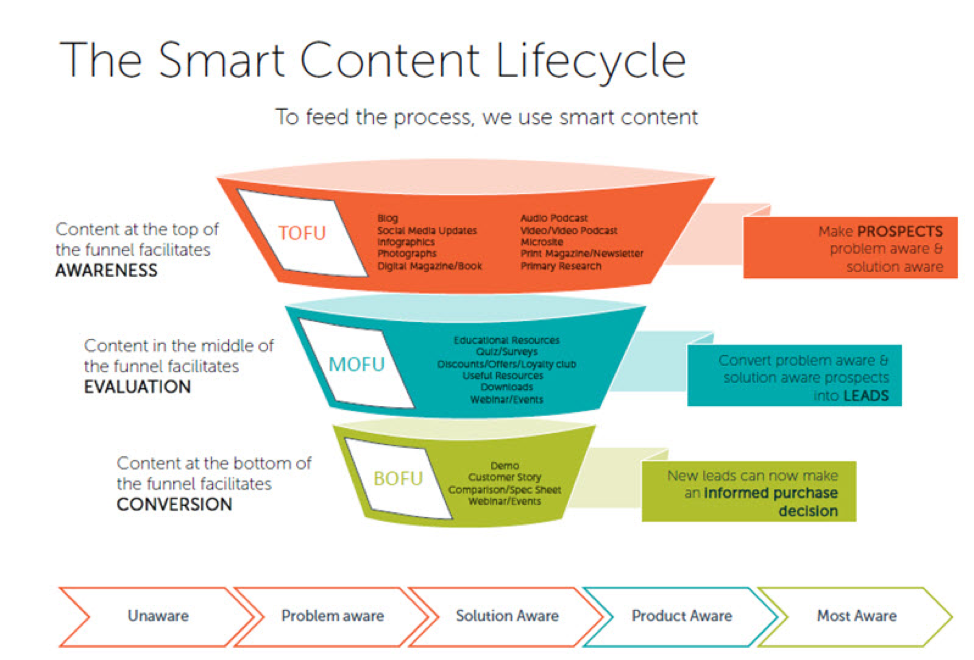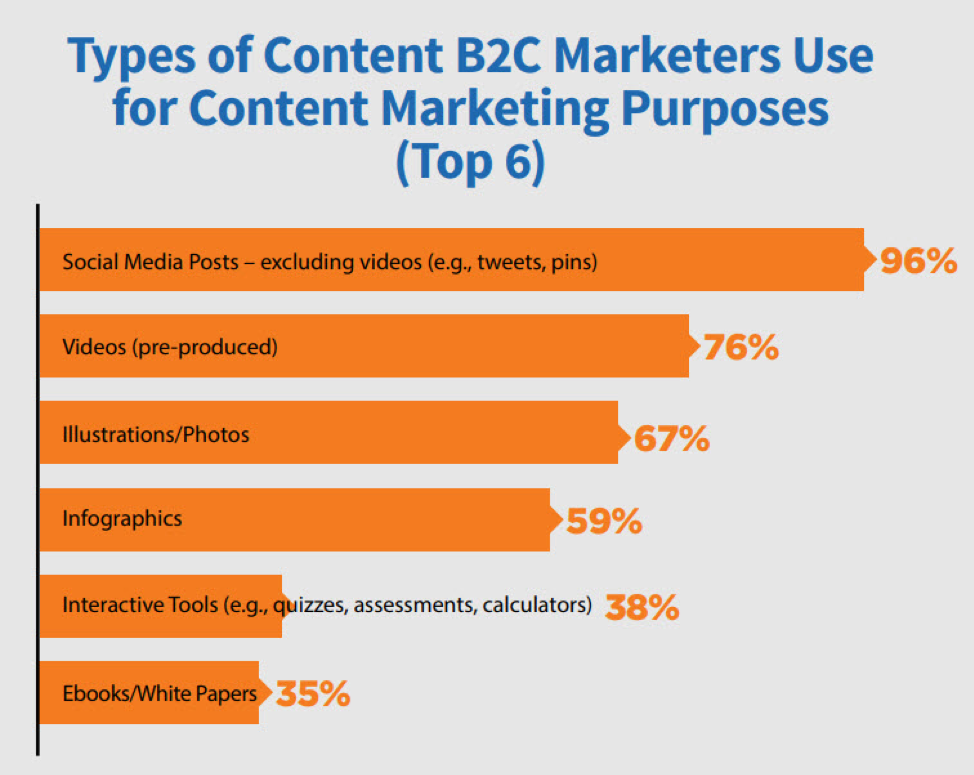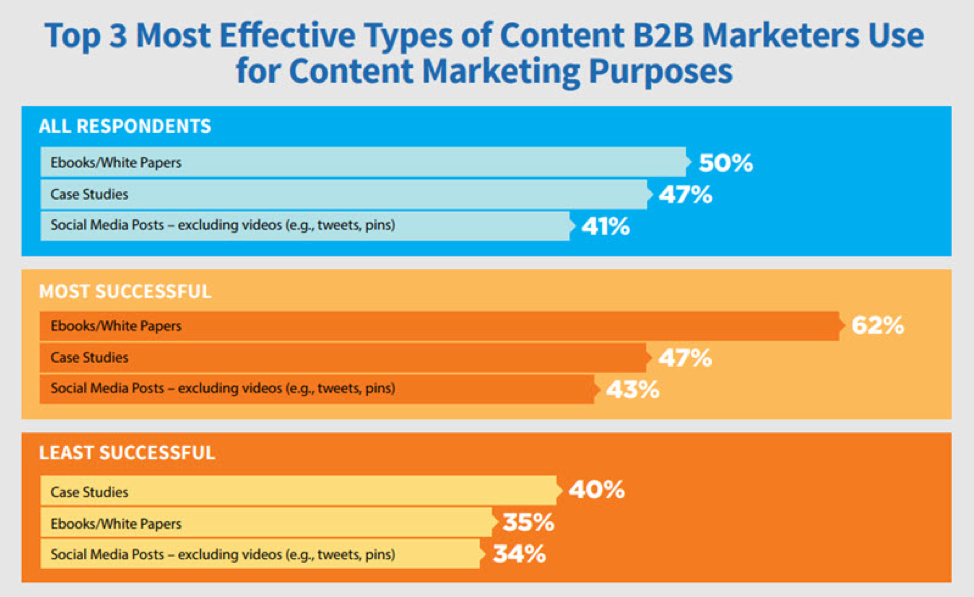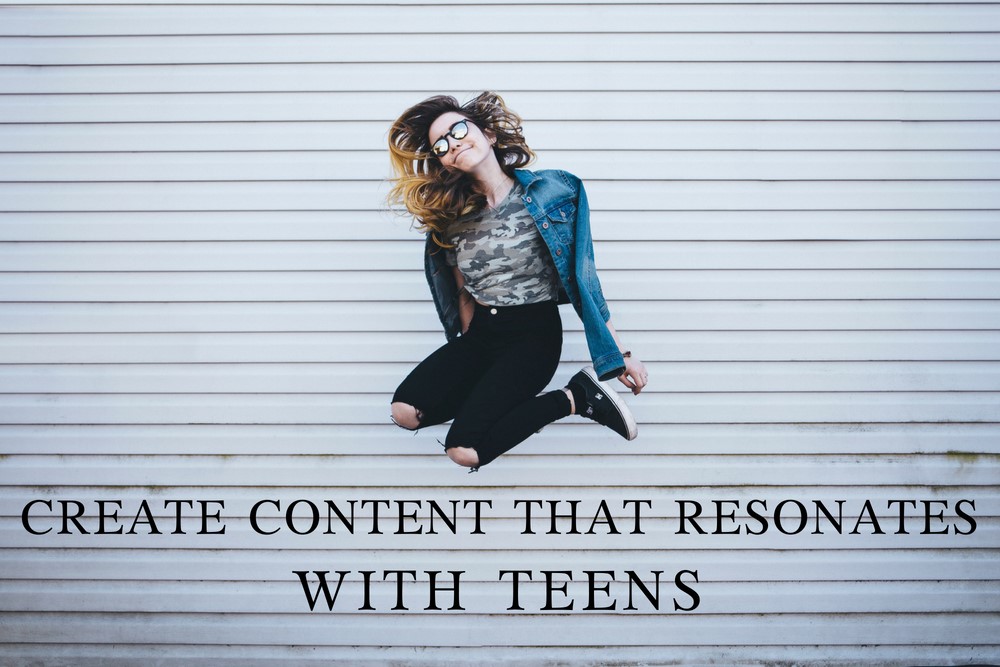
The new year is officially upon us, and it’s time to start thinking about how to adapt content marketing strategies in 2019.
Luckily, the Content Marketing Institute’s “B2B Content Marketing 2019: Benchmarks, Budgets and Trends” report is here, and its results — gathered from nearly 2,000 respondents — speak volumes: Successful content marketers are prioritizing their audience, investing in sponsored social media posts and upping their content marketing budget.
Here, I’ll go over the report’s findings. If you’d like to keep things short and sweet, scroll down to the bottom where I’ll highlight the top takeaways. Let’s get started!
Content Marketing Success Pays Off
More and more B2B companies are upping their content marketing game, and the results are proving to be worth their efforts.
Seventy-eight percent of respondents rate their current content marketing as either moderately, very or extremely successful, a one percent increase from last year’s report (click here to read my previous post on the 2018 report).
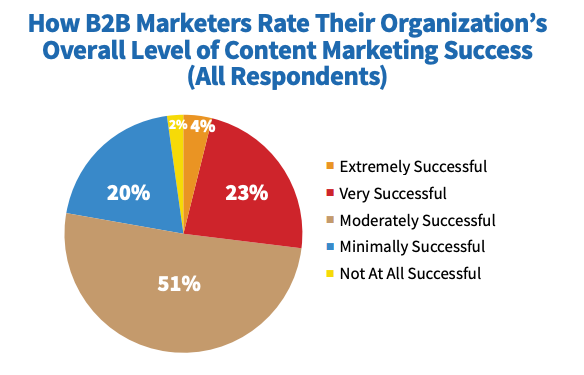
Additionally, 68 percent rate their content marketing as being somewhat or much more successful than it was last year, compared to only 63 percent in the previous report.
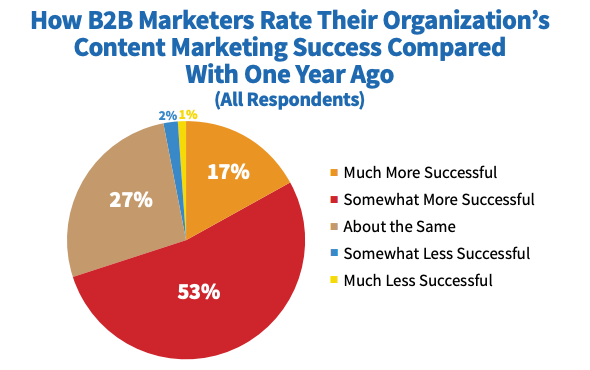
Perhaps most telling is that the most successful organizations tend to be those with the most mature content marketing: Forty-nine percent of the most successful companies report that their content marketing is mature, and 33 percent report that their content marketing is sophisticated.
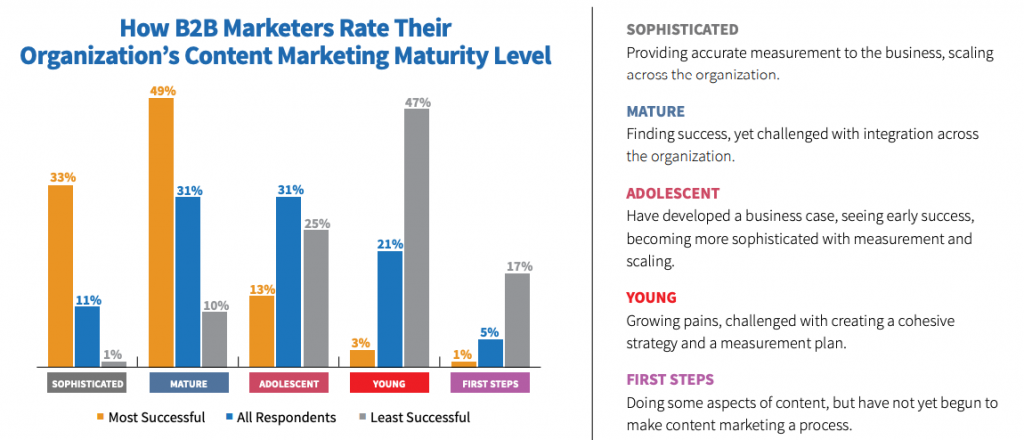
The same goes for commitment to content marketing: An impressive 58 percent of the most successful companies say that they’re extremely committed to content marketing. That’s more than double the percentage of all respondents.
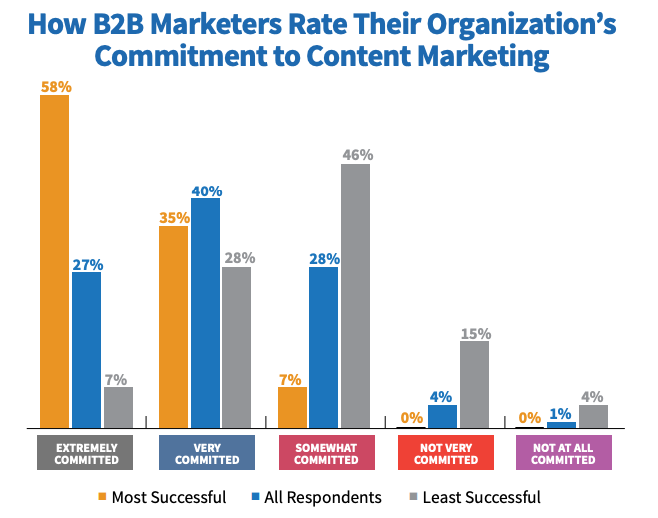
Strategy Is Key
Even if you’re committed to content marketing, you need a documented strategy to see results (check out Jessica’s blog post on the importance of content strategy here). According to the report, 65 percent of the most successful organizations have a documented content marketing strategy, compared to just 14 percent of the leas successful organizations.
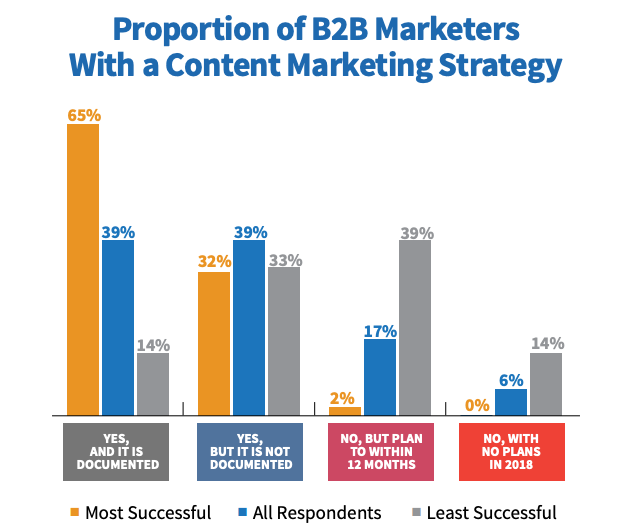
Why bother with a documented strategy? The survey’s respondents list many benefits, with team alignment, easier decision-making and increased focus on priorities being chief among them.

In terms of how they view their content strategy, 96 percent of the most successful companies say their audience views them as a trusted and credible source, 94 percent say that they value creativity and craft and 92 percent say they executive buy-in.

Audience Comes First
Personas are a crucial aspect of any comprehensive content marketing strategy, and the most successful companies know it (read Jessica’s blog post on personas here).
A staggering 77 percent of the most successful organizations use personas, compared to 55 percent of all organizations and 36 percent of the least successful.
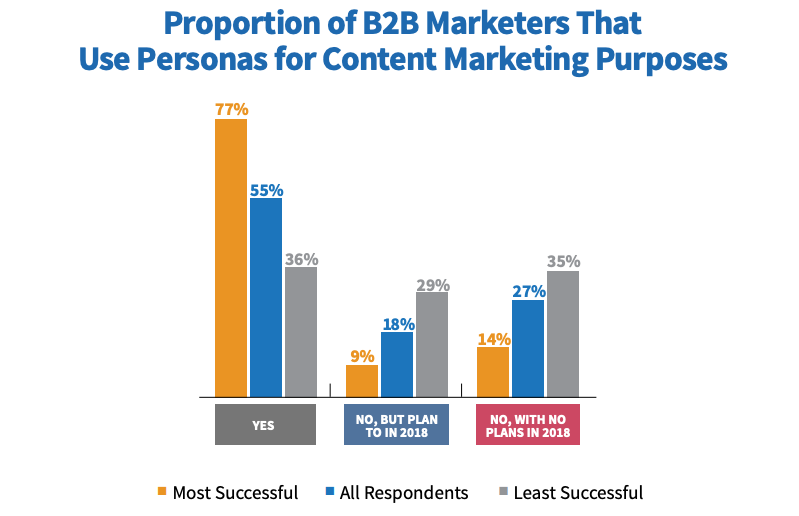
To research their audience, most companies use sales team feedback, website analytics and/or keyword research. Given the value of information from sales, it’s clear that cross-team alignment is important.
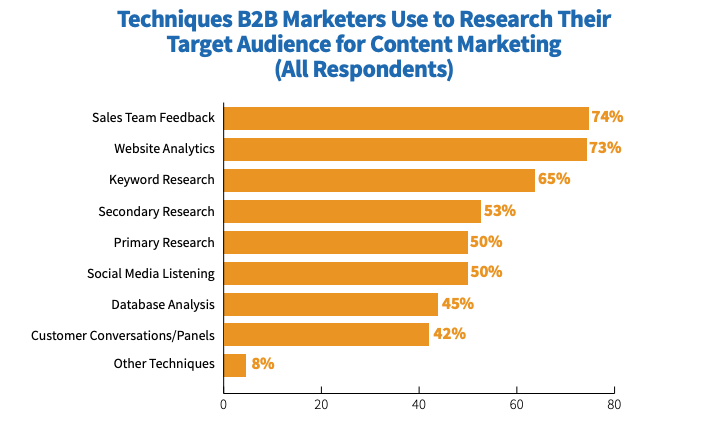
Keep in mind that the biggest differences occurred between the most and least successful companies in the areas of primary research, customer conversions/panels and database analysis.

To nurture and grow their audience, most companies use email/email campaigns, educational content and/or clear calls-to-action (CTAs) for next steps.
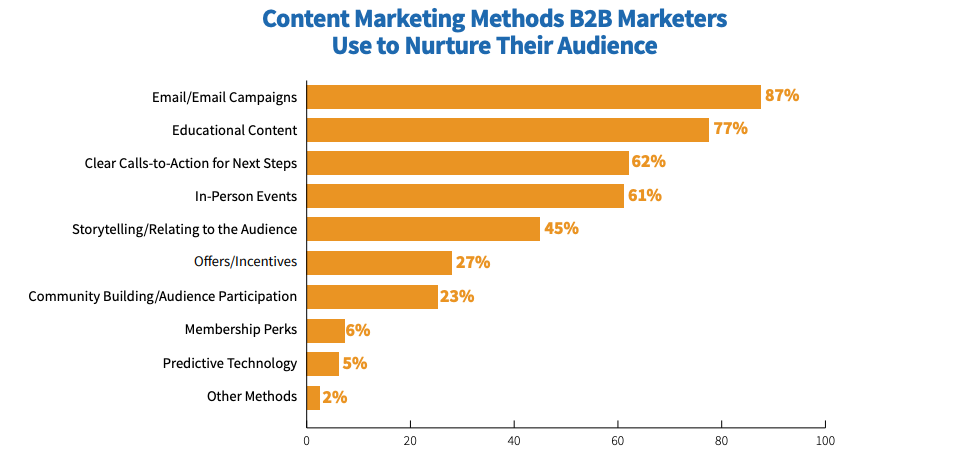
The most successful companies tend to focus on CTAs for next steps, storytelling/relating to the audience and community building/audience participation much more than the least successful companies.

Content Creation and Distribution: An Inside Look
For marketers, thinking about the audience doesn’t end with persona development or research. Rather, the audience is the most important component of content marketing throughout the entire creation process.
While creating content, 90 percent of the most successful marketers prioritize the audience’s needs over their own sales or promotional message.
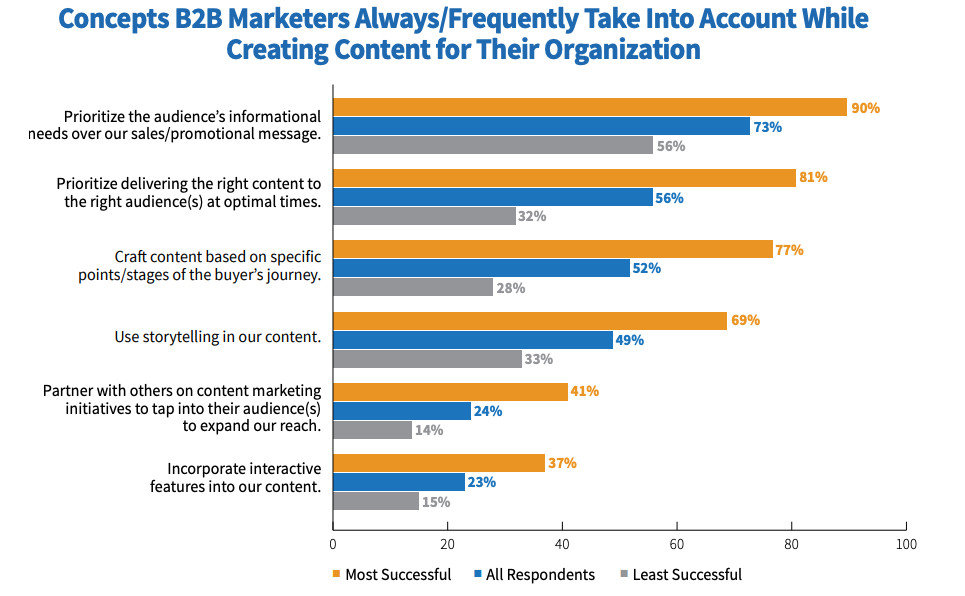
This is in line with respondents’ reasoning for using paid methods to distribute content: Eighty percent of all marketers and 83 percent of the most successful marketers do so in order to attract a new audience.
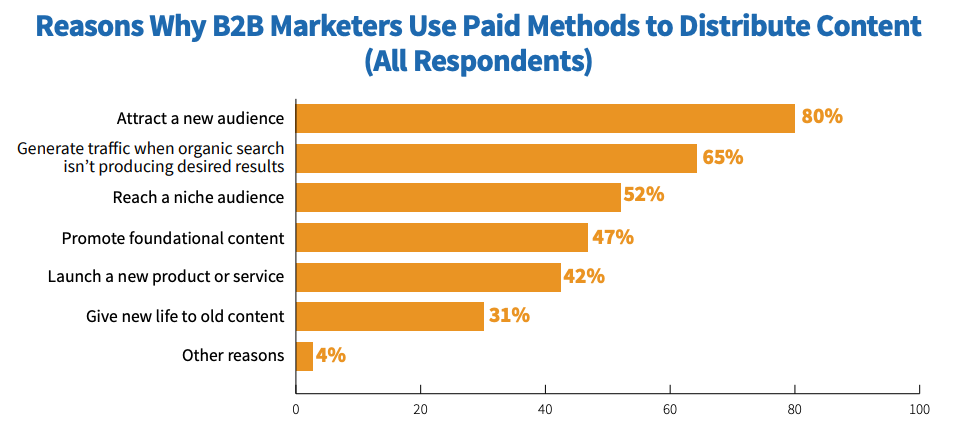
Marketers are doing their best to ensure they reach the widest audience, too, with 61 percent reporting that they post more content on social media than they did one year ago.
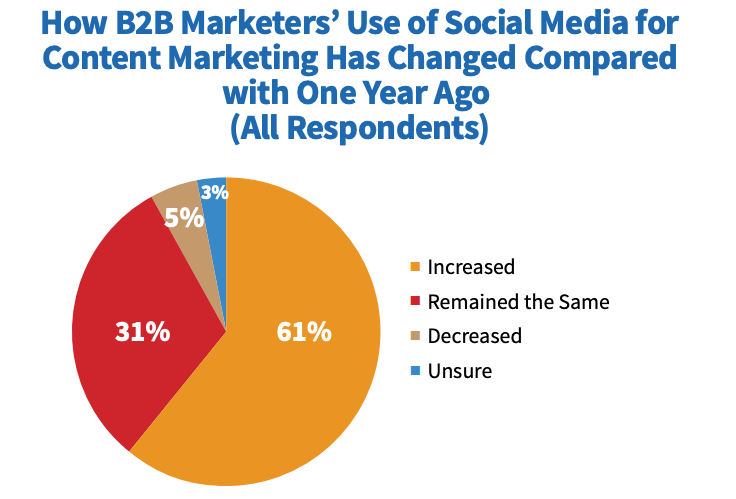
Respondents didn’t just use organic social media, either: Seventy percent of all marketers paid for sponsored social posts (that number jumps to 74 percent for the most successful). Additionally, 64 percent of all respondents pay for search engine marketing (SEM).

Prioritizing the audience seems to be working, too: Using content marketing, 81 percent of marketers created more brand awareness, 73 percent educated their audience 68 percent increased credibility and trust in the last 12 months.
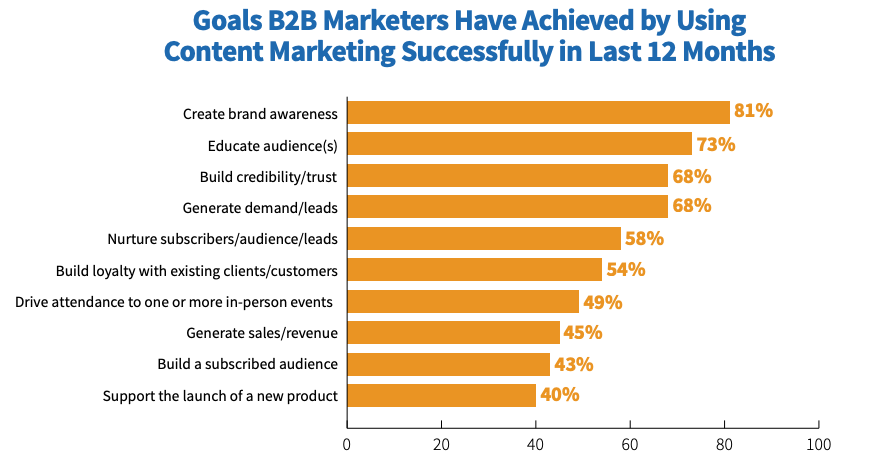
Money, Money, Money
Content marketing spending is up across the board, with 56 percent of marketers saying that they increased their content creation budget in the last 12 months.
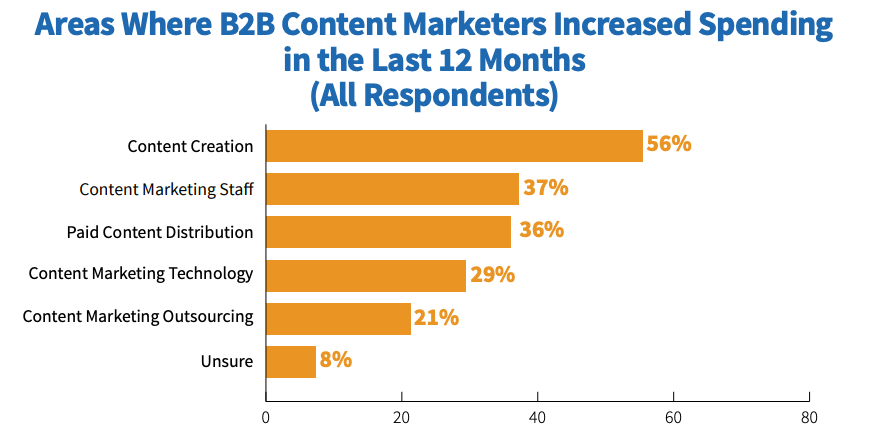
I’m also thrilled to see that in the next year, 35 percent of the most successful marketers plan to increase their content marketing budget.
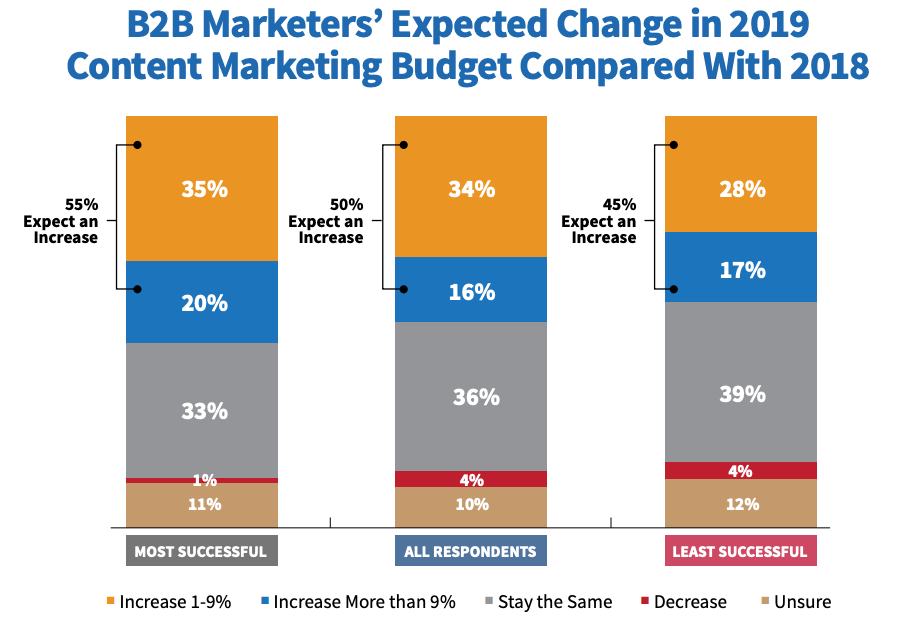
Here at bizbuzzcontent, we’ve always known that content is worth its weight in gold, so it’s fantastic to see that so many other B2B companies agree.
Essential Takeaways
This year’s report revealed that the top content marketers aren’t just creating content for its own sake: They’re focusing on connecting and building credibility with their audience, and are willing to increase their budget in order to do so successfully.
Let’s recap some more of the report’s key findings:
- Content marketing success is on the rise.
- Ninety percent of the most successful companies prioritize their audience’s needs over their own promotional message.
- Seventy-seven percent of the most successful companies use personas.
- Sixty-five percent of the most successful companies have a documented content strategy.
- Fifty-eight percent of the most successful companies are extremely committed to content marketing.
- Thirty-five percent of the most successful companies plan to increase their content marketing budget over the next year.
Going forward, take a cue from top players and:
- Put your audience first.
- Focus on creating high-quality content that resonates.
- Create and document a comprehensive content strategy.
- Commit to content marketing on an organizational level.
After all, content marketing can do so much more than polish your images: It has the power to transform the way your prospects and customers view your company, build genuine trust with your audience and help your brand awareness skyrocket.
To find out more about how you can connect with your audience, develop a complete content strategy and get the most out of your content marketing efforts, take a look at our content creation and strategy services.
Were you surprised by any of the report’s findings? Did you learn anything new about how your own company can refine its content marketing efforts? Let me know in the comments!

